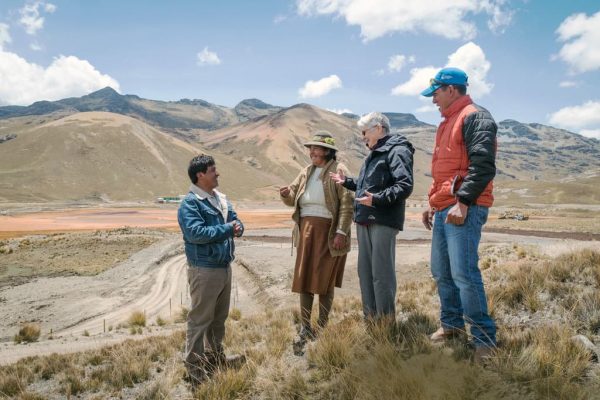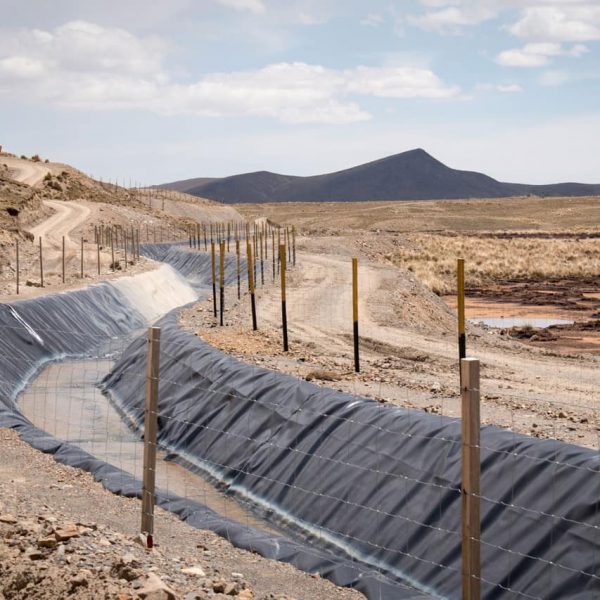Rural Peruvian community of Condoraque begins to see fruits of its labor, after years of advocacy
By Maria-Pia Negro Chin, photos by Nile Sprague
Villagers call the Condoraque River “burning waters” because the toxic waste coming from the mine upstream made the river untouchable. The once life-giving river in rural Puno, Peru, was devoid of life to the point that the Aymara indigenous people of the village wondered how they would survive next to such a contaminated water source.
But after nearly seven years of working with the Human Rights and the Environment (DHUMA), a Maryknoll-supported nonprofit organization in Peru, the mine has finally launched a plan to restore the Condoraque to health.
Ubaldo Layme Gil, past president of Condoraque village, says residents persisted to have their voices heard. As first reported by Maryknoll magazine in 2010, about 50 Aymara families saw their water contaminated by tons of toxic tailings from a tungsten mine that opened near their community in the 1970s. The indigenous people of Condoraque were not consulted before mining operations began, and when the original mining company left in the 1990s, it did not restore the damages it caused.
A second mining company later began operations in the area on the condition that it repair the environmental damage caused by the first mine. But the new company began mining without rehabilitating the area.
Realizing the new mining company was failing to fulfill its responsibilities to clear up the contamination, Condoraque community leaders invited DHUMA representatives to see what the toxic mine waste was doing to the people, their livestock and their property.
After other authorities ignored their plight, Simon Orihuela, a former community president, asked Maryknoll Sister Patricia Ryan, DHUMA’s president, and her team to “come and see” what the mine’s toxic waste was doing to the village and how the contaminated water was making their livestock sick and causing their alpacas to abort their calves.
“Once you go and see, you are totally convinced of the gravity of the situation,” says Sister Ryan, who as a Maryknoll missioner in Peru puts Catholic social teachings into action by advocating for social justice and care for the environment. “Since then, we have been working together with the community in monitoring the water and working on a penal case (to hold the mine responsible for the cleanup of the environmental contamination).”
Thanks to these efforts, mine officials have accepted their responsibility and launched a five-year plan to rehabilitate the environment of Condoraque. An integral part of this plan is the remediation of environmental liabilities, including dealing with more than 1. 2 million metric tons of toxic tailings and continuous acid drainage from the mineshaft and the severe contamination of a natural lagoon between the mine and the river.

Maryknoll Sister Patricia Ryan (second from right) confers with Condoraque village leaders (l. to r.) Simon Orihuela, Feliza Quispe and Ubaldo Layme Gil.
Although it still has an orange tint, the Condoraque River is slightly cleaner now because of channels dug to capture rainwater at the top of the mountains and transport it to the river in pipes to circumvent the toxic tailings below. Orihuela and Layme are still concerned that the water quality is not as healthy as it should be.
“It is going to take at least five years for the water to be restored to usable purposes,” Sister Ryan estimates and then adds, “There is still a lot of contamination.”
However, the beginning of remediation marks a victory for the village.
“We are very pleased by what we are seeing because the main objective of the people of Condoraque is that the environment be restored as it had been before,” says Sister Patricia Ryan. “That their water is going to be drinkable … and that there would be birds and fish again and no more disease.”
To read more about how Maryknoll entities are defending environmental rights in Peru, go to River contamination in Puno.
Featured Image: Simon Orihuela compares a clean rock with an orange-tinted rock from Condoraque River, which his community is working to clean.


